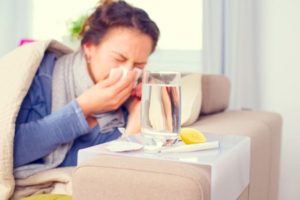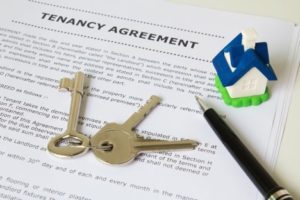 According to a survey of the perceptions of housing quality in New Zealand, nearly half of New Zealand adults reported that they were living in a cold home. 64% of them believed that their home required immediate repairs or maintenance and 32% claimed they had a problem with dampness.
According to a survey of the perceptions of housing quality in New Zealand, nearly half of New Zealand adults reported that they were living in a cold home. 64% of them believed that their home required immediate repairs or maintenance and 32% claimed they had a problem with dampness.
New Zealand is a great place to live. There’s a good reason why our beautiful country is often referred to as “God’s Own”. Beautiful native forests, flawless sandy beaches and lush rolling hills are just a few of the scenic gems New Zealand has to offer. It’s enough to attract over 15 million tourists to our shores each year, who contribute around $7.3 billion to the economy per annum. It brings some of the world’s best film directors down under to use our untouched paradise as a backdrop for their films.
There are a few instances however, where New Zealand somewhat drops the ball. The weather: the summers are stunners but the winters are wicked! What makes matters worse is that a large portion of New Zealand’s housing stock is substandard. Houses built in in New Zealand before 1978 were not legally required to be insulated. Meaning that a lot of our homes are not equipped to deal with the chilly winters, leading to cold, damp homes prone to mould and moisture. Both of which can cause of respiratory illness.
The World Health Organisation recommends that indoor home temperatures be no lower than 18 degrees Celsius, though 21 degrees is the preferred temperature for the very young and very old.
Kiwi houses are getting more expensive but are they any healthier?
 It’s no secret that New Zealand house prices are soaring. Despite efforts by government to address housing unaffordability, the constant climb of house prices is making it increasing harder for first time buyers to get on the ladder, the International Monetary Fund (IMF) has taken note. New Zealand has topped the list when it comes to the IMF’s house price to income ratio, beating 30 of the world’s richest countries including Austria, Sweden and Germany.
It’s no secret that New Zealand house prices are soaring. Despite efforts by government to address housing unaffordability, the constant climb of house prices is making it increasing harder for first time buyers to get on the ladder, the International Monetary Fund (IMF) has taken note. New Zealand has topped the list when it comes to the IMF’s house price to income ratio, beating 30 of the world’s richest countries including Austria, Sweden and Germany.
It’s not surprising considering a 12.7% increase in house prices across the board in New Zealand between 2015/16, bringing Auckland’s average house price up to $1,045,207. It’s little wonder with houses like the infamous Grey Lynn dump – complete with such features as no running water, rotten floor boards and mouldy ceilings – selling for a staggering $1,075 million.
However it’s not only Auckland’s house prices that are soaring. Even rural areas that were previous considered more affordable are skyrocketing. The Whangarei region showed a 23.9% increase in the 2015/2016 year while North East Hamilton also jumped up by 26.8% in the same year and the Waikato region climbed by over 30%. This information provided by QV NZ, suggests that more and more Aucklanders may be looking north and south to get into the competitive kiwi housing market.
But despite the continued rise in house prices, the quality of New Zealand housing is still subpar. The majority of which is rental properties in low socio-economic areas such as South Auckland.
Keeping homes healthy
It may seem like renting out a property means we no longer have any huge obligations, that once the tenant moves in that it is simply their responsibility to keep the house dry and mould free but that is not entirely the case.
Under the Residential Tenancies Act 1986, a landlord is expected to keep the house in a liveable condition and ensure that routine maintenance is regularly undertaken. By 2019 all homes must be adequately insulated to assist the tenants to keep the home warm and dry. Landlords are also expected to note the type of insulation installed in the home on the written tenancy agreement, so that potential tenants are aware of this information upfront. The types of insulation legally required differs depending on where in New Zealand you live .
A landlord should also consider how a tenant is likely to ventilate the home. While preventing mould is the tenant’s house-keeping responsibility, it is also the landlord’s responsibility to make doable. How can you prevent moisture build up in your rental home? How can you make it easier for your tenant to keep their home dry? You could install safety catches in the bathrooms so they are able to air out the bathrooms all day while they are at work without risking a break in. Or you could you install an extractor fan in the bathroom, which efficiently removes steam from the bathroom before it has a chance to escape into the rest of the house. It would also be wise to install an HRV system in your rental properties.
A Home Ventilation System could save you time and money further down the line. Home Ventilation Systems work by circulating air throughout the home, removing high humidity and pushing the dry warm air from the roof space into the rest of the home. By removing moisture from the air, the home becomes easier to heat and less likely to grow mould in places prone to dampness. This means you are less likely to replace curtains or other fittings. Also areas that tend to collect moisture (like window panes) may not need as much upkeep.
Damp homes are not just hazardous because they are cold, it is also the mould and fungus that can grow as a result. Mould spores, when disturbed and subsequently breathed into the lungs can cause respiratory infections, allergies and asthma. It can also affect the immune system, making you more inclined to get sick. Some people are more likely to be affected by mould and damp, such as babies, the elderly, those who already suffer from allergies and people with weakened immune systems like pregnant women.
No one should live in a cold damp home. It is not healthy for us or our tenants.
The proposed Healthy Housing Bill
 While landlords are now required to ensure that all rental homes meet certain criteria and must work towards insulating them by the 2019 due date, the proposed bill will enforce new obligations on landlords. Currently in its select committee stage, the Healthy Homes Guarantee Bill would seek to amend the Residential Tenancies Act 1986, in that all rental properties would be required to meet set minimum standards of insulation and heating. Failure to provide a home that meets these standards could potentially lead to the landlord being prosecuted. While something does need to be done about the state of houses in New Zealand, it is not known whether this new bill will provide a clear cut solution.
While landlords are now required to ensure that all rental homes meet certain criteria and must work towards insulating them by the 2019 due date, the proposed bill will enforce new obligations on landlords. Currently in its select committee stage, the Healthy Homes Guarantee Bill would seek to amend the Residential Tenancies Act 1986, in that all rental properties would be required to meet set minimum standards of insulation and heating. Failure to provide a home that meets these standards could potentially lead to the landlord being prosecuted. While something does need to be done about the state of houses in New Zealand, it is not known whether this new bill will provide a clear cut solution.
The key to a healthy home is to regularly air the property out, preferably on a warm sunny day, so warm air is able to dry out any moisture and remove dust and other irritants. Unfortunately this is not always an option during our cold, wet kiwi winters.
Home is where the heart is. It’s where we rest, sleep and play. Our homes should not be making us sick. By keeping your home dry, safe and warm you are investing in your health – and potentially saving money on doctor’s bills!
Works Cited:
@StatisticsNZ. “Perceptions of Housing Quality in 2014/15.” Home. Web. 22 Nov. 2016.
Conway, Megan. “11 Places in NZ You Must Visit.” Stuff. Web. 22 Nov. 2016.
“FAQ’s.” FAQs. Web. 22 Nov. 2016.
“Grey Lynn Dump Sells for $1.075m.” Stuff. Web. 22 Nov. 2016.
Harris, Catherine. “NZ Tops IMF’s Housing Unaffordability List.” Stuff. Web. 22 Nov. 2016.
“Health and Cold Damp Houses.” Environmental Health Indicators. Web. 22 Nov. 2016.
“Insulation.” Insulation » Tenancy Services. Web. 22 Nov. 2016.
“Monthly Residential Value Index – QV.co.nz.” Monthly Residential Value Index – QV.co.nz. Web. 22 Nov. 2016.
“Mould and Dampness.” Mould and Dampness » Tenancy Services. Web. 22 Nov. 2016.
“News.” How The Healthy Homes Bill Impacts Rental Property. Web. 22 Nov. 2016.
“Thermal Insulation Required in NZ Homes.” Thermal Insulation Required in NZ Homes | NZHistory, New Zealand History Online. Web. 22 Nov. 2016.
https://www.facebook.com/healthstatuscom. “Five Ways to Have Healthy Air in Winter – Winter Health Tips.” HealthStatus. 31 Mar. 2016. Web. 22 Nov. 2016.









Madison Thomas - 7 years ago
It’s very interesting and useful information! Thanks!